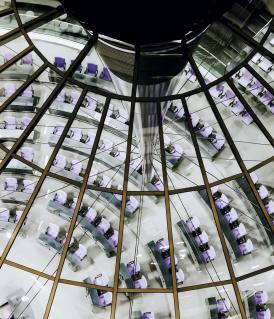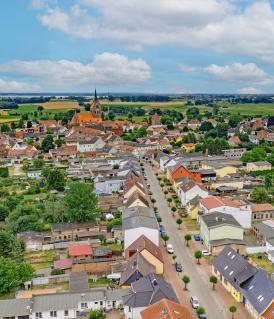Land of Diversity

What is Germany like in geographical terms?
Covering around 358,000 km², Germany is the fourth-largest country in the European Union European Union In 1957, Germany was one of the six founding members of today’s EU, along with France, Italy, Belgium, the Netherlands and Luxembourg. The EU is currently made up of 27 states; the euro is the official currency in 20 of them. For Germany, European integration forms the basis for peace, security and… Read more › , after France, Spain and Sweden. From the North Sea and Baltic Sea to the Alps in the south, Germany can be divided up into the following distinct geographical regions:
- the North German Plain
- the Central Uplands
- the hills of the southwest
- the foothills of the Alps in the south
- the Bavarian Alps
From its northernmost to its southernmost point, Germany measures 876 kilometres, and 640 kilometres from the most easterly to the most westerly point.
How high is the standard of living in Germany?
Germany has one of the highest standards of living in the world. According to the 2023 United Nations United Nations The United Nations (UN) has a key role to play in the international system. Germany has been a UN member since 1973. Since joining, Germany has taken on more and more responsibility and is now one of the largest donors and supporters of the United Nations. For example, Germany is the second largest… Read more › Human Development Index (HDI), Germany ranked fifth out of 192 countries.
Do more people in Germany live in cities or in rural regions?
With a population of over 83 million, Germany is the most populous country in the EU and one of the most densely populated. Around 78 percent of the population live in densely or moderately populated areas, while around 32 percent live in major cities with over 100,000 inhabitants, of which there are 80 in Germany. The cities also attract many tourists. Berlin Berlin Once a year, during the Berlinale film festival, the world of the silver screen focuses its attention on Berlin. And the city’s inhabitants are used to global interest. After all, the people of Berlin have lived in a capital city since 1458. However, there is also a shady side to the city’s history… Read more › is a particularly popular choice and regularly sets new visitor records. A metropolis of 3.8 million people, it is one of Europe’s top tourist destinations, with 30.6 million overnight stays in 2024.
Are there still differences between East and West Germany?
The Federal Government Federal Government The Federal Government and cabinet is made up of the Federal Chancellor and the Federal Ministers. While the Chancellor holds the power to issue directives, the ministers have departmental powers, meaning that they independently run their respective ministries in the framework of those directives… Read more › is committed to delivering good living conditions for people of all nationalities across the whole country, from cities to the countryside. The gap has narrowed between East and West Germany since reunification in 1990, and living conditions are becoming more and more similar. A new “Future Centre for European Transformation and German Unity” has been set up in Halle an der Saale to continue the process of social cohesion, and to demonstrate the close connection between German unity and democracy in Europe.
Germany’s demographic transition is particularly apparent in rural areas and regions with a lack of well-paid jobs, where rates of urban migration are above average. The Federal Government is providing targeted support for affected areas in the form of packages of measures aimed at increasing employment, mobility and infrastructure.
Food and diet in Germany
Consumers in Germany spent around 17 billion euros on organic food and drinks in 2024. Organic products are certified, with more than 111,000 products already registered in the Bio-Siegel (organic seal) database.
There are more than 36,000 organic farms in Germany, accounting for 11.5 percent of the country’s agricultural land. Roughly two thirds of this land is farmed in line with the regulations issued by the organic farming associations.
Around four percent of people in Germany identify as vegetarians, while roughly one percent say they are vegans.
Gourmet cuisine is still in demand, with 340 restaurants in Germany holding one or more Michelin stars in the 2024 Michelin Guide – more than ever.


